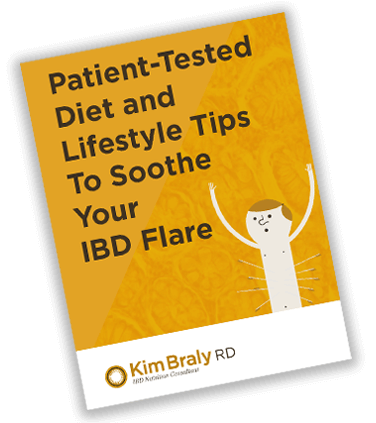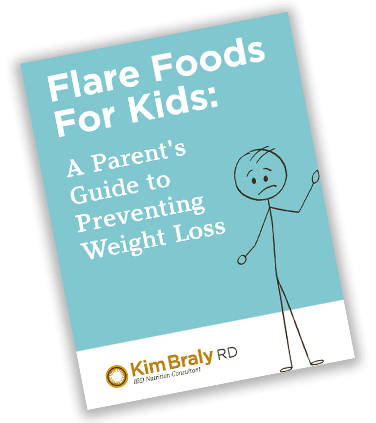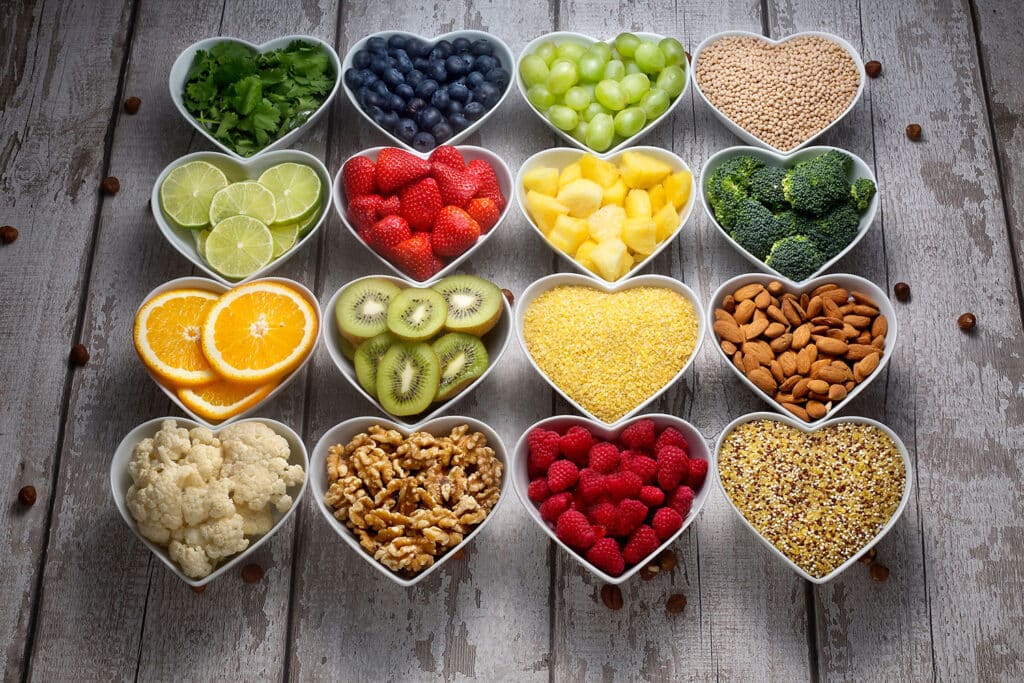Organic, Grass Fed, and Free Range: What do they mean? (Part 1 of 3)

Why is it important to know the definitions?
Consumer education plays a key role in the purchase of organic, grass fed, and free range products. While there may be benefits to these products in comparison to their conventional counterparts, “the factor most consistently associated with the increased propensity to purchase organic food is the level of consumer education” (1). The resources contained here are evidence-based, meaning that researchers have evaluated the current standards. This post and the resources within can better help you and or your patients to discern and make informed decisions when it comes to your choices on the above topics as a consumer.
Where did “organic”, “grass fed”, and “free range” come from?
A Brief History
The market for premium food products is expanding globally, and you’ve likely seen evidence of this as an increasing number of products labeled “organic”, “grass-fed”, and “free-range” have lined the shelves at your local grocery store(2). In the past, organic products were more likely to be found in speciality stores, whereas today it is quite common to spot them at any conventional supermarket and even gas stations or convenience stores(1).
“Organic”, “Grass fed”, and “Free Range”-Defined
Organic
Organic products have to meet certified standards for production, handling, processing, and marketing in order to qualify as organic products. These products often carry a significant price premium, costing up to 40% more than their conventionally raised counterparts(2).
Organic Farming
Organic farming techniques use the approach of growing crops and raising livestock without the use of the following (2):
- Synthetic chemicals
- Hormones
- Antibiotic agents
- Genetic engineering
- Irradiation
How does this compare to non-organic products? Are some “chemicals” still allowed in organic?
The USDA regulates the definition of the word organic as it applies to organic meat, poultry, eggs and dairy products. To be USDA organic certified, these products must come from animals that are given no antibiotics or growth hormones, ever. Organic plant foods that are USDA certified products must be raised without using most conventional or synthetic pesticides and fertilizers, made without synthetic ingredients or sewage sludge, bioengineering or ionizing radiation (3,4). In addition, organic animal and plant producers that wish to be USDA certified must have a government-approved certifier inspect their farm to ensure these standards are met. The USDA also has standards for the way organic food is handled and processed(3).
The pesticides allowed in organic food production are typically not man-made, but instead are natural substances, such as soaps (5). The following quote from a USDA representative summarizes the approach of organic farming:
“The basic rule for organic agriculture is to allow natural substances and prevent synthetic. For livestock…however, vaccines play an important part in animal health-especially since antibiotic therapy is prohibited.”(6)
Additional information about organic regulations and the substances allowed and prohibited in the production of organic products can be found here:
Grass Fed (versus Grain Fed)
The terms “grass-fed” and “grain-fed” refer to the composition of the feed that the animal was given during the time it was raised. Products and byproducts from animals such as beef, lamb, and goat can be sold with this label. Prices vary depending on the kind of product being sold as well as the market conditions. For example, you can find reports of beef trends from last month by clicking here .


DDGs defined: Distiller’s dried grains with solubles (DDGS) are the co-product of dry-milled ethanol production.
Animals that are grass-fed (forage fed), with the exception of calves consuming milk before weaning, are not fed grain or grain by-products. Instead they are allowed continuous access to pasture during the growing season. This is thought to have beneficial effects upon the products these animals produce(7).
Free Range (Pasture raised, and Cage Free)
The terms “free range”, “pasture raised”, and “cage free” are typically synonymous in terms of marketing. They each refer to the living conditions of the animals, with each respectively describing whether the animal roamed the pasture or range freely, or was raised in a cage-free environment. In commercial farming, the “free” in “free range” usually refers to birds that are free to move around in an outdoor enclosure (8). Such living conditions are thought to have a beneficial effect on the products produced, as explored in the following section on nutrient quality and composition.
The difficulty in defining these methods is that there is no standard definition of how long pasture-raised or free-range animals graze for their products to qualify with those terms. However, some producers will submit their claims to the USDA (the government department charged with regulating such claims) for approval in order to label their products in a way that avoids liability. Most commonly, animals in pasture-raised or cage-free conditions aren’t exclusively in that environment, but being allowed this option affords the animals the freedom to roam and graze more at will than their conventionally raised counterparts.
Does pasture raised naturally mean less antibiotics given the food they are eating?
Pasture-raised generally refers to the living circumstances of the animal, and so additional labeling and documentation will be required by the producers to detail antibiotic use(9).
Which Do I Choose?
In some cases, conventional agriculture “best practice” seems similar to organic, grass-feed, or free-range standards(2). So how do you know what to choose?
A recent study in Denmark found three different understandings of health when it comes to consumers and their preference for organic products(10):
- Health as purity (the dominant understanding)
- Health as pleasure
- A Holistic perspective on health (principles behind organic agriculture)
Recent trends in purchasing organic foods reflect consumer preference:
“Health conscious individuals are aware about the health benefits of organic food and are willing to switch from conventional food and pay even higher for organic food”(11).
While organic can cost 10-40% more than similar conventional produce and products and although scientific evidence is still building, organic agriculture seems to contribute to maintaining an optimal health status and decreases the risk of potential adverse health impacts. Scientists generally agree on the following consensus(1,12,13):
“Studies [agree] in finding organic food much less contaminated by pesticides, and with residues of much lower toxicity compared to those found in conventional foods. As for heavy metals…found to be much lower in organic produce…is a positive finding” (12).
Organic food items are rated higher on safety criterion due to lack of artificial techniques used to modify products unnaturally or in unhealthy ways(10). Organic produce seems to contribute to maintaining an optimal level of health and decreasing risk of chronic disease, including CVD, neurodegenerative diseases, and certain cancers(14,15).
Tip:
Because food labeling has so many nuances and lacks clear definition at times, it is ideal if you can buy from a local farmer. Many do not have access to one living in a large city, but if you live in a more rural community, you can ask your local farmer 1) what the animal was fed 2) how long the animal (i.e. cow, chicken, pig) was allowed to graze in the pasture 3) if the animal was exposed to antibiotics and for what reason.
Cheat Sheets & Resources
Shopping for organic, grass-fed, or free range food can be tricky, but these guides can help you navigate the grocery aisles. Parts 2 & 3 (coming soon) will help explore the differences in health benefits of these food options, as well as the existing rules, regulations, and what they all mean when reading a food label.
Until then, enjoy this free printable guide that can help you “unscramble” eggs and what different words you might see on the label mean. Look out for Part 2, coming soon!
Chart based upon references listed at end of article (16-19).
Cheat Sheets & Resources
Shopping for organic, grass-fed, or free range food can be tricky, but these guides can help you navigate the grocery aisles. Parts 2 & 3 (coming soon) will help explore the differences in health benefits of these food options, as well as the existing rules, regulations, and what they all mean when reading a food label.
Until then, enjoy this free printable guide that can help you “unscramble” eggs and what different words you might see on the label mean. Look out for Part 2, coming soon!
Chart based upon references listed at end of article (16-19).
Click here for your FREE guide
REFERENCES
- Forman J, Silverstein J; Committee on Nutrition; Council on Environmental Health; American Academy of Pediatrics. Organic foods: health and environmental advantages and disadvantages. Pediatrics. 2012;130(5):e1406‐e1415. doi:10.1542/peds.2012-2579
- Brantsæter AL, Ydersbond TA, Hoppin JA, Haugen M, Meltzer HM. Organic Food in the Diet: Exposure and Health Implications. Annu Rev Public Health. 2017;38:295‐313. doi:10.1146/annurev-publhealth-031816-044437
- Klemm S. Understanding Food Marketing Terms. Academy of Nutrition and Dietetics . 2019. Eatright.org.
- Popa ME, Mitelut AC, Popa EE, Stan A, Popa VI. Organic foods contribution to nutritional quality and value. Trends in Food Science & Technology. 2019:84;15-18. doi: 10.1016/j.tifs.2018.01.003.
- National Pesticide Information Center. Organic Pesticide Ingredients. NPIC (A Cooperative Agreement between Oregon State University and the US Environmental Protection Agency). Accessed at http://npic.orst.edu/ingred/organic.html.
- McEvoy M. Organic 101: Allowed and Prohibited Substances. US Department of Agriculture. 2018. Accessed at https://www.usda.gov/media/blog/2012/01/25/organic-101-allowed-and-prohibited-substances.
- Agricultural Marketing Service. Grass Fed Small & Very Small Producer Program. USDA. 2020 Accessed at https://www.ams.usda.gov/services/auditing/grass-fed-SVS.
- Newberry RC. Chapter 9-Commercial Free-Range Egg Production Practices. Egg Innovations and Strategies for Improvements. Academic Press. 2017;89-102. https://doi.org/10.1016/B978-0-12-800879-9.00009-3
- Food Safety and Inspection Service. Labeling Guideline on Documentation Needed to Substantiate Animal Raising Claims for Label Submissions. 2019. Accessed at https://www.fsis.usda.gov/wps/wcm/connect/6fe3cd56-6809-4239-b7a2-bccb82a30588/RaisingClaims.pdf?MOD=AJPERES
- Ditlevsen K, Sandøe P, Lassen J. Healthy food is nutritious, but organic food is healthy because it is pure: The negotiation of healthy food choices by Danish consumers of organic food. Food Quality & Preference. 2019:71; 46-53. doi: 10.1016/j.foodqual.2018.06.001.
- Ansari AH, Talan A. Effects of well-being, stress and a healthy lifestyle on preference for organic food. Indian Journal of Health and Wellbeing. 2017:8(7); 648-654.
- Gomiero T. Food quality assessment in organic vs. conventional agricultural produce: Findings and issues. Applied Soil Ecology. 2018:123; 714-728. doi: 10.1016/j.apsoil.2017.10.014
- Hurtado-Barroso S, Tresserra-Rimbau A, Vallverdu-Queralt A, Lamuela-Raventos RM. Organic food and the impact on human health. Critical Reviews in Food Science & Nutrition. 2019:59(4); 704-714. doi: 10.1080/10408398.2017.13948
- de Roos B, Mavrommatis Y, Brouwer IA. Long-chain n-3 polyunsaturated fatty acids: new insights into mechanisms relating to inflammation and coronary heart disease. Br J Pharmacol. 2009;158(2):413‐428. doi:10.1111/j.1476-5381.2009.00189.x
- Daley CA, Abbott A, Doyle PS, Nader GA, Larson S. A review of fatty acid profiles and antioxidant content in grass-fed and grain-fed beef. Nutr J. 2010;9:10. Published 2010 Mar 10. doi:10.1186/1475-2891-9-10
- Anderson KE. Comparison of fatty acid, cholesterol, and vitamin A and E composition in eggs from hens housed in conventional cage and range production facilities. Poultry Science. 2011:90;1600-1608. doi: 10.3382/ps.2010-01289.
- Gordon B. Understanding Egg Labels. Academy of Nutrition and Dietetics. 2020. Eatright.org.
- Forsman Farms. What’s Your Grade?. 2020. Accessed at http://www.forsmanfarms.com/whats-your-grade/.
- Egg Safety Center. Fact Sheet-Types of Eggs. 2020. Accessed at https://eggsafety.org/fact-sheet-types-of-eggs/.

Hi! I'm Kim Braly, RD, a clinical researcher and IBD Nutrition Consultant. I specialize in cutting-edge dietary therapies for inflammatory bowel disease that have been shown in multicenter trials to decrease inflammation, alleviate IBD symptoms and induce remission. I'm passionate about offering this effective new option to patients and their families with my 3D-Dietary™ Approach for IBD and helping to usher in a new era of IBD treatment through mentoring and research trial consultation. Let's see what diet can do for you.
ABOUT
FOR PATIENTS

Flares Happen!
You can't always put your life on hold when IBD rears its head, but you can make this your easiest flare yet. My proven diet and lifestyle tips support your gut, body, mind & emotions for a faster recovery and a longer remission.
FOR PARENTS

Is Your Child’s Weight Dropping Fast?
You don't have to stand helpless during an IBD flare. Feed your child foods proven to minimize triggers, calm inflammation, and repair the gut. Get them healing and growing!











